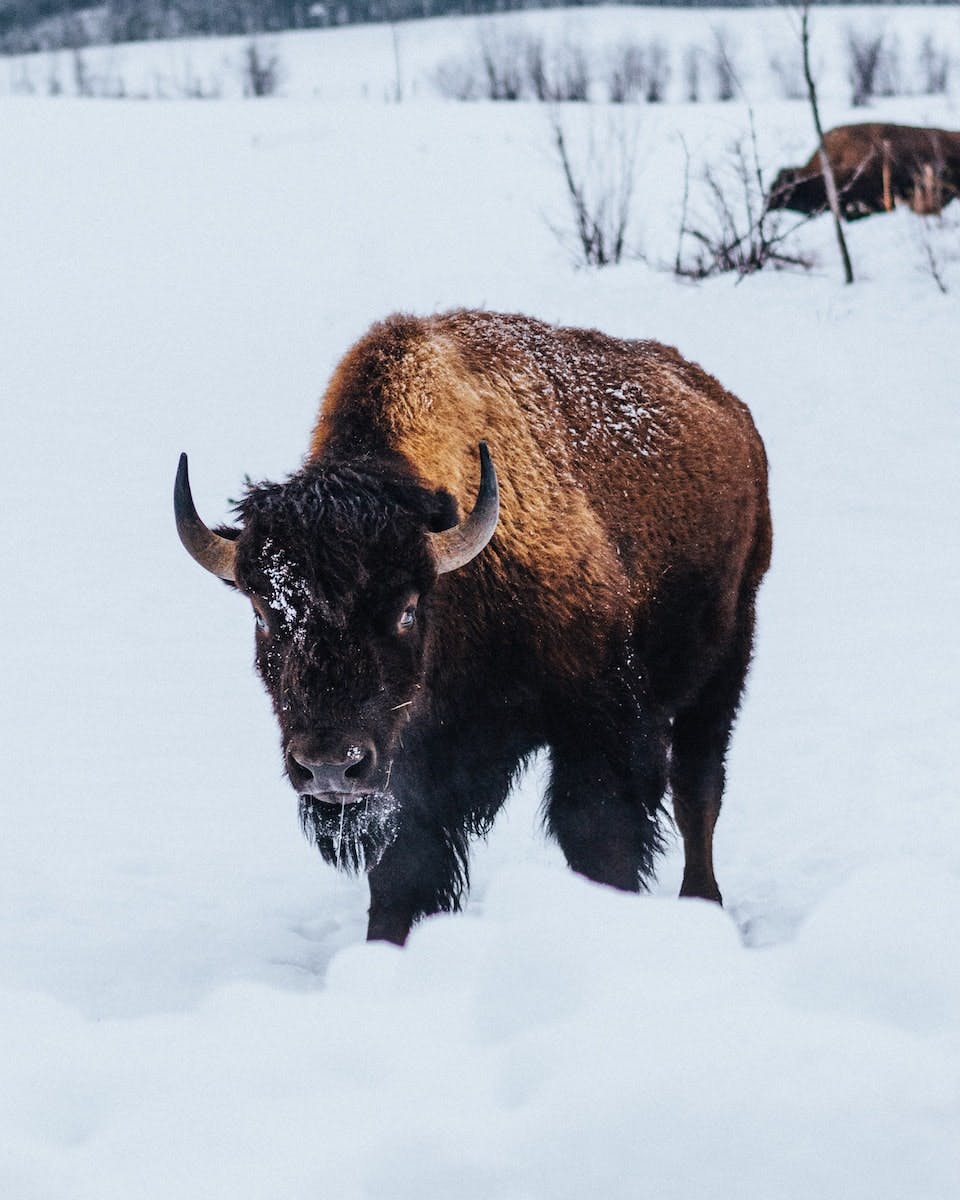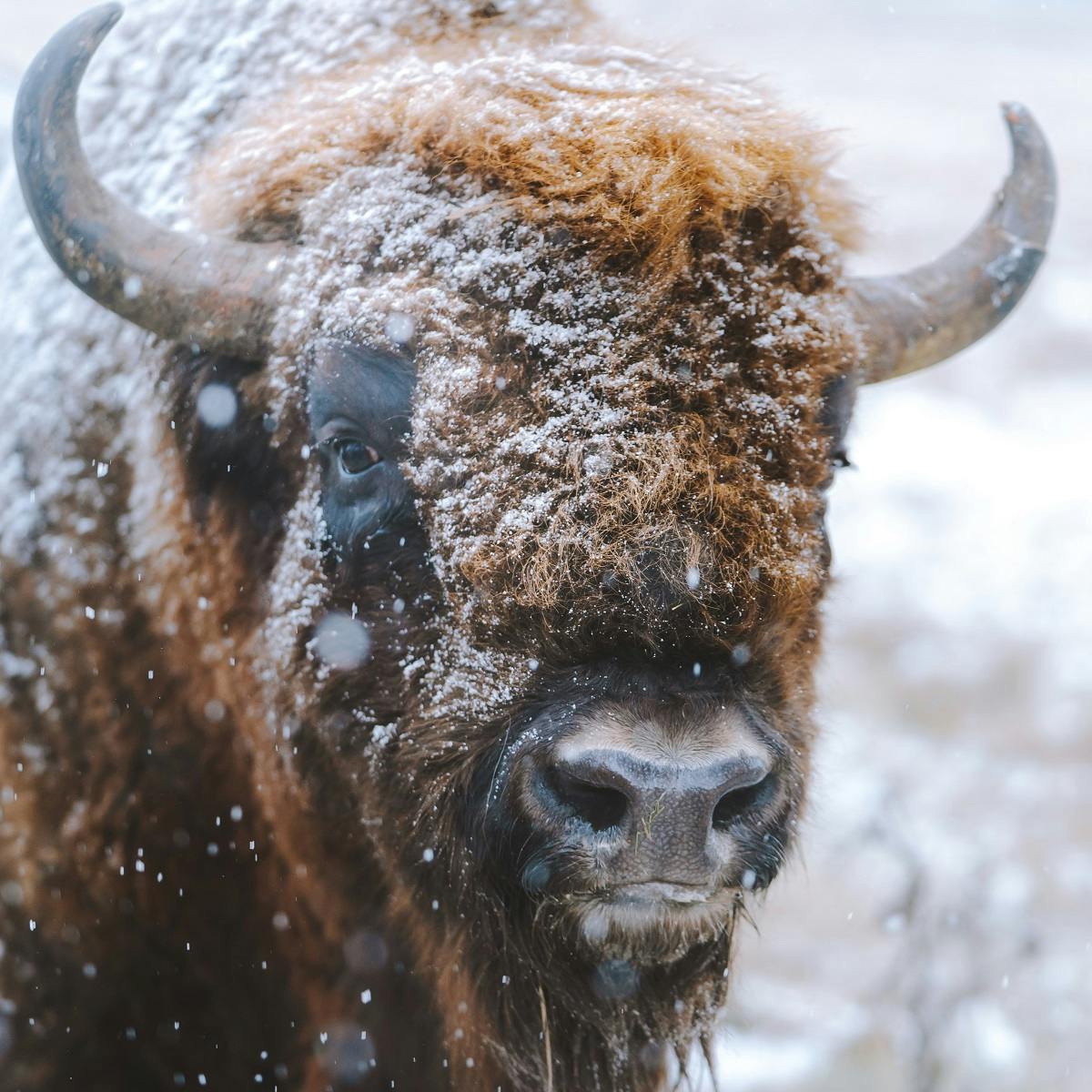The image of bison herds roaming vast open grasslands might immediately make you think of Yellowstone National Park or the prairies of Montana and Canada. Lesser known, is the fact that Europe’s landscapes were once home to large herds of the European bison (Bison bonasus), a cousin to the North American bison (Bison bison), or ‘buffalo’. It too has a troubling past, and by the early 1920's European bison were extinct in the wild.
The North American Cousin
The European bison, or wisent, is very similar to the North American bison, but there are some notable differences in both appearance and behaviour. The European bison is less hairy, has a slimmer build and longer legs. Its horns are more curved, an adaptation that enables them to fight by locking horns as opposed to butting. They do, however, share a sad history. The North American bison declined to around 300 individuals after the arrival of Europeans. Their prairie habitat was converted to ranches for cattle farming and they were victims of a vicious slaughter. Settlers hunted them for food and hides but also in an attempt to devastate the Indigenous people of Turtle Island, many of whom relied on bison for food, clothing and housing. During 1871 and 1872, an average of 5,000 bison were killed every day.

Bison In Europe
European bison also suffered a drastic decline at the hands of humans. By the 20th century, only two populations survived in Europe after decades of over-hunting and habitat loss. One, in the remote Northern Caucasus Mountains of Russia, and a more viable population in Poland’s Białowieża Forest, where a herd of around 600 bison remained. By the 1920's, European bison were hunted to extinction in the wild.
From a mere 12 individuals, surviving in zoos and private collections, captive breeding programmes began and, thanks to ambitious reintroduction projects, there are now around 7,000 wild and semi-wild bison in Europe (Poland, Germany, France, Spain and elsewhere). Our partners at El Encinarejo and the European Bison Conservation Center of Spain are among the organisations working to reintroduce bison to the wild, having reintroduced 18 bison to southern Spain.


Take action now
Do you want to have a direct impact on climate change? Sir David Attenborough said the best thing we can do is to rewild the planet. So we run reforestation and rewilding programs across the globe to restore wild ecosystems and capture carbon.
Get involvedA Wildlife Refugee
Part of the drive to reintroduce bison in Europe stems from their role as a ‘keystone’ species. Just like the American bison have played a role in grassland management, European bison can help create and maintain open grasslands and meadows, supporting a wealth of insects and birds. They can also help spread seeds through their dung, as well as fertilize and break up the soil to enable vegetation to grow.
However, since biologists have only been able to study the most adaptable of the species, those that have successfully clung on and survived in relatively safe refuges, there is still a lot about European bison we don’t know. Given its relative success in the Bialowieża forest, European bison are typically thought of as a forest species. However, being a large grazing bovid, its evolutionary background, dental morphology, neonatal behaviour, diet and microhabitat selection is characteristic of a grazing species inhabiting open, grass‐rich habitats. The European bison we know today might be an example of a refugee species, one that can no longer access optimal habitat, confined to suboptimal habitats, with consequences for fitness and density. Whether bison in Europe prefer open grasslands, woodlands or a combination of the two remains uncertain. As we continue to find more room to live alongside Europe’s largest land animal once again, we can make space for them to roam in their preferred habitat, enabling us to better understand and conserve this charismatic species.

A Pleistocene Comeback
Much like the North American bison, European bison have been important to human culture for millennia, featuring in the cave art of pre-historic people as far back as 20,000 years ago. Today, they have captured our attention once again. With continued conservation and reintroduction efforts, this Pleistocene beast might once again roam free across much of Europe’s grasslands and woodlands.

Glossary of terms
Adaptation: In an evolutionary sense, this is the direct result of evolution and natural selection, where animals become adapted to their environments by means of changes to their behaviour or physically to their body.
Morphology: When people refer to the shape, size or structure, they are referring to its morphology. This is the study of these areas and much attention goes into learning about the morphology of plants and animals, and how they are adapted to deal with their environments.
Neonatal Behaviour: Neonatal itself, refers to something that is very recently born. Neonatal behaviour is thus the behaviour that a new-born exhibits.
Pleistocene: Referring to the epoch of time which began c.2.6 million years ago up until around 10,000 years ago. It featured many important changes to the world we know today as well as giving rise to many of the plant and animal species we are familiar with, as well as our own species, homo sapiens.
Rewilding: Rewilding is the reintroduction of native tree and animal species to an area where they were once present, but now absent. These areas are managed at the beginning until they are able to look after themselves and regenerate naturally. It is attempting to return the natural balance to landscapes as well as a valuable tool in the fight against climate change.
To learn more about European bison see our articles:
Unleashing the power of bison in Spain
Rewilding Diaries: an encounter with the mighty European bison
Or take a look at a similar species on its own path:
Sources & further reading

- “Conservation implications of the refugee species concept and the European bison: king of the forest or refugee in a marginal habitat?” - Ecography
- “Early cave art and ancient DNA record the origin of European bison” - Nature Communications
